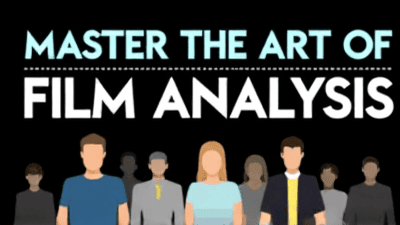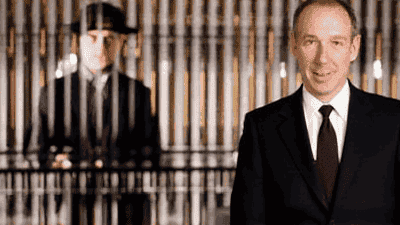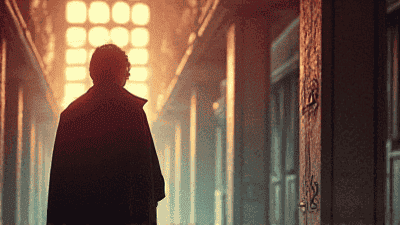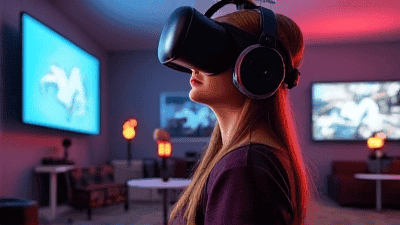
Master the Art of Film Analysis: What Critics Don't Tell You About Storytelling
Film analysis, often perceived as an inherently subjective endeavor, fundamentally examines the intricate craft of cinematic storytelling. It moves beyond a simple judgment of "good" or "bad" to dissect the complex mechanisms that underpin a film's impact and resonance. While a captivating plot is essential, the true art lies in how that narrative unfolds, why certain choices are made, and the profound psychological effects these decisions have on the audience. This article delves into these hidden layers, revealing the sophisticated architecture beneath every compelling screen story.
The act of storytelling is a fundamental human experience, deeply embedded in our collective consciousness, shaping cultures, conveying histories, and exploring complex emotions. In the realm of cinema, this age-old tradition finds its most vibrant and influential expression, impacting societal perspectives, driving cultural discourse, and influencing communication on a global scale. For filmmakers, understanding these mechanisms is crucial for creation; for critics, for insightful evaluation; and for audiences, for a richer appreciation. Current developments, from the rise of serialized streaming content to interactive narratives and transmedia storytelling, demand a deeper analytical toolkit. These advancements often spark debates about narrative efficacy, audience engagement, and the evolving role of the storyteller. Understanding the sophisticated mechanics of film storytelling is key to navigating these transformations and resolving disputes about what constitutes compelling narrative in a rapidly shifting media landscape. What impact would it have on our understanding or practice of narrative arts if we failed to fully comprehend the intricate mechanics of film storytelling?
The Unseen Blueprint: Deconstructing Narrative Structures

Unveiling the Classic Three-Act Paradigm and Beyond
Narrative structure forms the essential framework upon which any story is built, guiding the progression of events and ensuring coherent dramatic flow. At its core lies the classic Three-Act Structure, a foundational model that divides a story into a beginning (setup), a middle (confrontation), and an end (resolution). In the first act, the protagonist and their world are introduced, culminating in an "inciting incident" that propels the story forward. The second act then delves into the "rising action," where the protagonist faces escalating obstacles and character development is deepened, leading to a "climax" – the peak of the conflict. Finally, the third act provides the "falling action" and "denouement," resolving the central conflict and revealing the story's ultimate outcome. Think of Star Wars: A New Hope, where Luke Skywalker's ordinary life is disrupted by R2-D2's message (inciting incident), leading to confrontations with the Empire, climaxing in the Death Star trench run, and resolving with the heroes' celebration.
While the Three-Act Structure is pervasive, many variations exist, such as the Five-Act Structure often seen in classical drama or television series, which allows for more complex plotlines and multiple climaxes. Another powerful framework is Joseph Campbell's "Hero's Journey" (or monomyth), which outlines a common pattern of narrative archetypes and stages, from the "Call to Adventure" to the "Return with the Elixir." The Lord of the Rings exemplifies this, charting Frodo's reluctant journey to destroy the One Ring. Narratives, much like musical compositions, follow distinct movements, building tension and releasing it through carefully orchestrated beats. Cognitive psychology research consistently shows that audiences, often unconsciously, prefer stories that adhere to these familiar structural patterns, as they aid in comprehension and emotional engagement, making the narrative more satisfying and memorable.
Beyond Archetypes: The Psychology of Character and Conflict
Empathy, Motivation, and the Engine of Dramatic Tension
Characters serve as the emotional conduits of any story, agents whose journeys drive the narrative forward and allow audiences to connect with the human experience. Conflict, in turn, is the essential engine of drama, presenting obstacles that force characters to grow, adapt, and make choices. Character arcs, the transformations a protagonist undergoes, are crucial for creating emotional resonance, demonstrating internal (psychological struggles) and external (physical challenges) conflicts. While Jungian archetypes like the "hero," "mentor," or "shadow" provide a useful starting point for character design, modern storytelling often moves beyond these simplistic labels, crafting nuanced, flawed individuals who defy easy categorization. Consider Walter White in Breaking Bad, an anti-hero whose descent into villainy provides a complex psychological study, blurring the lines of traditional morality.
Crucially, character motivation—what a character wants and why they want it—is the wellspring of their actions and reactions, dictating their choices and fueling the conflict. When audiences understand a character's deep-seated desires and fears, empathy naturally arises, often triggered by mirror neurons that allow us to simulate others' experiences. This profound connection is what makes a story truly impactful. The evolution of character portrayal in cinema reflects societal shifts, moving towards more complex, relatable figures rather than purely archetypal ones.
Modern storytelling increasingly explores the shades of gray within traditional archetypes, as illustrated below:
| Archetype (Classic) | Modern Interpretation | Key Trait |
|---|---|---|
| Hero | Anti-Hero | Flawed Morality |
| Mentor | Unconventional Guide | Questionable Wisdom |
| Villain | Sympathetic Antagonist | Understandable Motives |
This table vividly demonstrates how classic archetypes are increasingly subverted or enriched in contemporary storytelling. For instance, the transition from a purely heroic protagonist to an anti-hero like Tony Soprano in The Sopranos provides a richer psychological landscape, challenging audience expectations and forcing deeper engagement with moral ambiguities. Similarly, villains are now often imbued with understandable, if misguided, motives, making them more complex than mere evil entities. These evolving portrayals demonstrate a significant shift towards psychological depth over simplistic moral binaries, reflecting our collective desire for more realistic and thought-provoking narratives. By understanding these subtle shifts, we can appreciate the sophisticated ways filmmakers craft compelling characters that resonate deeply with audiences.
Decoding the Frame: Visual Language and Subtextual Meaning

Cinematography, Editing, and the Unspoken Narrative
Beyond dialogue and plot, a film communicates a wealth of information and emotion through its visual language. This unspoken narrative is crafted through the intricate interplay of cinematography, editing, and mise-en-scène. Cinematography encompasses elements like camera angles, movement, lighting, and color palette. For example, a low-angle shot can impart power to a character, while a high-angle shot can convey vulnerability or insignificance. Desaturated colors often signal a bleak or melancholic mood, whereas vibrant hues can suggest joy or vibrancy. Lighting, too, is a powerful tool, from the stark shadows of film noir to the soft glow of a romantic drama, each choice shaping the emotional tone and guiding the audience's perception.
Editing, the art of assembling shots, dictates a film's pacing, rhythm, and the juxtaposition of images. Rapid "jump cuts" can create a sense of disorientation or urgency, while slow, deliberate dissolves might indicate the passage of time or a reflective mood. The sequence and duration of shots profoundly influence how information is processed and how emotional impact is delivered. Mise-en-scène refers to everything visible within the frame—props, costumes, set design, and actor blocking. A meticulously cluttered room can subtly reveal a character's inner turmoil or obsessive personality without a single line of dialogue. This visual communication acts much like poetry, conveying complex emotions and unspoken thoughts through suggestive imagery and symbolic details. Research in audience reception consistently demonstrates how viewers implicitly understand these non-verbal cues, often absorbing subtextual meanings that deepen their engagement with the narrative.
Conclusion
This exploration into the art of film analysis has unveiled the sophisticated mechanisms underlying compelling cinematic storytelling. We have delved into the unseen blueprints of narrative structures, examining how frameworks like the Three-Act Structure and the Hero's Journey guide the story's progression and profoundly impact audience comprehension. We then moved beyond superficial character archetypes, investigating the psychology of character and conflict, highlighting the critical roles of empathy, motivation, and transformative arcs in generating dramatic tension. Finally, we decoded the powerful visual language of cinema, demonstrating how cinematography, editing, and mise-en-scène collectively weave an unspoken narrative, imbuing films with subtextual meaning and emotional depth. Understanding these elements transcends mere passive viewing; it empowers both creators to craft more impactful stories and audiences to engage with film on a profoundly intellectual and emotional level. Film storytelling, in essence, is a sophisticated dialogue between artist and observer, shaping perceptions, reflecting the human condition, and enriching our collective experience.
Looking ahead, the landscape of cinematic storytelling promises exciting, yet challenging, transformations. Emerging technologies like immersive virtual and augmented reality narratives offer unprecedented opportunities for audience engagement, blurring the lines between viewer and participant. Simultaneously, the rise of AI-driven adaptive storytelling could pave the way for highly personalized narrative experiences. However, these advancements also pose challenges: maintaining the essential human emotional core amidst technological novelty, and avoiding narrative fatigue from formulaic content optimized by algorithms. Macro scientific policies, particularly in areas like digital ethics and content regulation, will inevitably influence narrative production and dissemination. Interdisciplinary integration, drawing insights from neuroscience, cognitive psychology, and computational linguistics, will increasingly inform narrative design, allowing creators to craft stories with even greater precision and impact. Continuous research in narrative theory, audience psychology, and media studies is paramount to navigate these evolving landscapes, ensuring that the timeless art of storytelling remains vibrant, relevant, and profoundly human in an ever-changing world.
Frequently Asked Questions (FAQ)

Q: How can an audience member move beyond simply liking or disliking a film to genuinely analyzing its storytelling? A: Moving beyond a superficial "like" or "dislike" requires a shift from passive consumption to active observation and critical inquiry. Start by asking why you felt a certain emotion or responded to a particular scene. Was it the dialogue, the music, the camera work, or the actor's performance? Break down the film into its constituent parts: What was the protagonist's central goal? What obstacles did they face, and how did they overcome them (or fail to)? Pay close attention to how the film shows emotion rather than just tells it. For instance, instead of a character saying "I'm sad," does the film use a melancholic color palette, a drooping posture, or slow-motion rain to convey sadness? Notice the pacing: are certain scenes edited quickly to build tension, while others linger to create intimacy? A practical approach is to identify specific narrative beats, such as the "inciting incident" (the event that kicks off the main plot) or the "climax" (the moment of peak conflict). This practice is much like learning to appreciate fine cuisine beyond just "tasty" by identifying specific ingredients, cooking techniques, and flavor profiles; it enhances your understanding and enjoyment exponentially. Engage with resources like film studies podcasts or analytical video essays to expose yourself to different critical perspectives.
Q: What are common misconceptions about film storytelling that critics often overlook? A: One prevalent misconception often overlooked is that effective storytelling must always be rigidly linear or strictly adhere to conventional structural templates. While frameworks like the Three-Act Structure are powerful, some critics might dismiss films that deviate, mistakenly equating non-linearity or experimental forms with poor storytelling. True storytelling mastery lies in purposeful deviation, where alternative structures serve thematic or emotional goals. Another common pitfall is to solely equate narrative "originality" with inherent quality, often underestimating the profound impact of masterful execution within a familiar framework. A film that tells a classic story exceptionally well, with nuanced characters and resonant themes, can be far more powerful than a convoluted, ostensibly "original" narrative that lacks emotional depth or thematic coherence. Furthermore, critics sometimes overemphasize plot mechanics while underestimating the significance of stylistic innovation, visual poetry, or sound design in conveying narrative and subtext. Storytelling isn't just about what happens, but how it's presented, the emotional journey it evokes, and the unspoken meanings woven into every frame. A film's enduring success often stems from its thematic coherence and resonant emotional impact, rather than simply surprising the audience with an unexpected twist or an entirely unprecedented premise.








